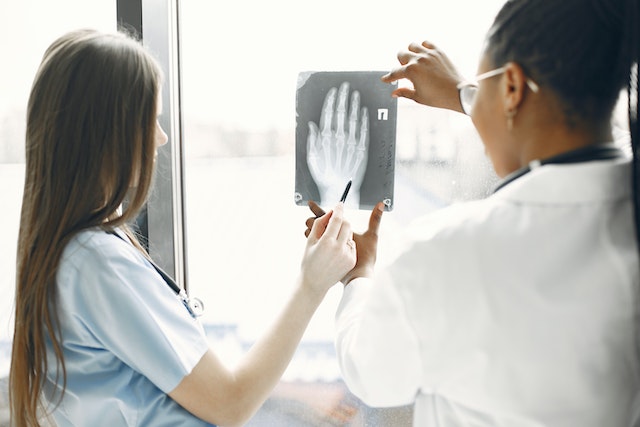A teleradiology company is a healthcare organization that provides remote radiology services using telecommunication technology. It connects radiologists with healthcare facilities, allowing them to interpret and analyze medical images remotely, regardless of geographical locations. These companies facilitate the transmission of medical images and reports, enabling timely diagnoses, expert consultations, and improved access to radiology services.
Working with a teleradiology company can enhance diagnostic accuracy in several ways
Access to Specialized Radiologists: Teleradiology companies often have a network of highly specialized radiologists who can provide expertise in specific areas, such as musculoskeletal radiology, neuroradiology, or pediatric radiology. This specialization allows for more accurate and precise interpretations of complex cases.
Peer Review and Collaboration
Teleradiology platforms facilitate peer review and collaboration among radiologists. This enables multiple experts to review and discuss challenging cases, leading to a more accurate diagnosis. Radiologists can consult with their peers, share knowledge, and seek second opinions, which can significantly enhance diagnostic accuracy.
Reduced Turnaround Time
Teleradiology companies typically offer quick turnaround times for reporting. Faster access to radiology reports means timely diagnoses, enabling prompt patient management decisions. Rapid reporting reduces the chances of missed diagnoses or delayed treatment, improving overall diagnostic accuracy.
24/7 Coverage
Teleradiology services often provide round-the-clock coverage, allowing healthcare facilities to access radiology expertise at any time, including nights, weekends, and holidays. This availability ensures that critical cases receive immediate attention, leading to accurate and timely diagnoses.

Subspecialty Interpretations
Teleradiology companies can match specific cases with radiologists who specialize in the relevant subspecialties. This ensures that complex or rare cases are interpreted by radiologists with extensive experience and knowledge in those areas. Subspecialty interpretations enhance diagnostic accuracy by reducing the likelihood of misdiagnosis or overlooking important findings.
Quality Assurance Programs
Teleradiology companies usually have robust quality assurance programs in place. These programs include regular audits, peer reviews, and adherence to strict reporting standards. By maintaining high-quality standards, teleradiology companies ensure accurate and reliable interpretations.
Advanced Technology and Tools
Teleradiology companies often employ advanced technologies and tools to enhance diagnostic accuracy. These include computer-aided detection (CAD) systems, advanced visualization software, and access to a comprehensive database of previous imaging studies for comparison. These tools assist radiologists in identifying subtle abnormalities, improving diagnostic accuracy. Another benefit is that teleradiology offers is the ability for the radiologist to manipulate the images in ways that cannot be achieved solely with film. As a result, it allows for the extraction of additional clinically significant information from the images and leads to more precise diagnoses and clinical decisions.
Vesta Teleradiology: Over 16 Years of Excellence
By leveraging the expertise of specialized board certified radiologists, promoting collaboration, offering fast turnaround times, providing subspecialty interpretations, implementing quality assurance programs, and utilizing advanced technology, teleradiology companies like Vesta can significantly enhance diagnostic accuracy and contribute to improved patient care.
Sources
Ncbi.nlm.nih.gov
Sciencedirect.com
Openai.com



